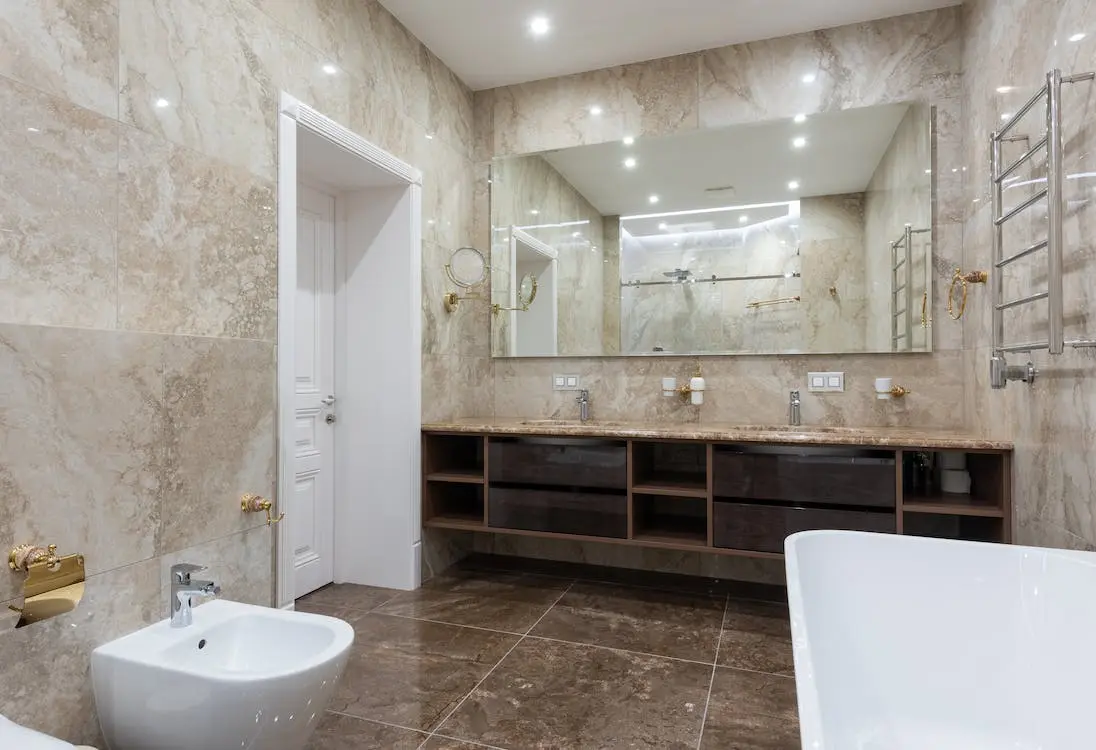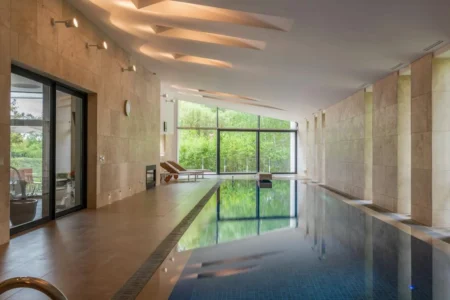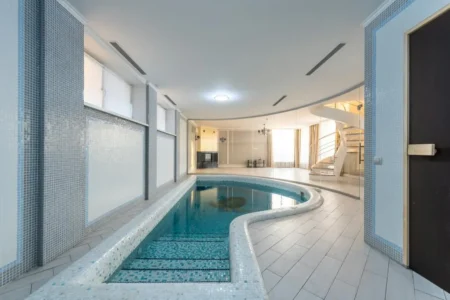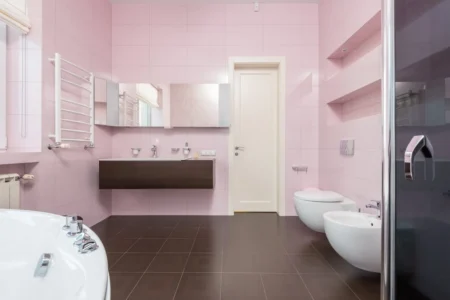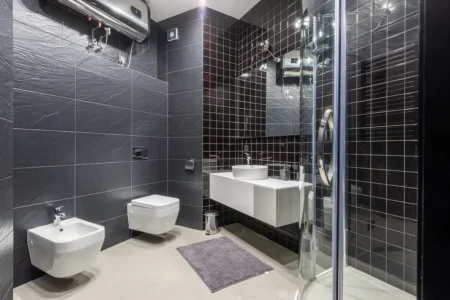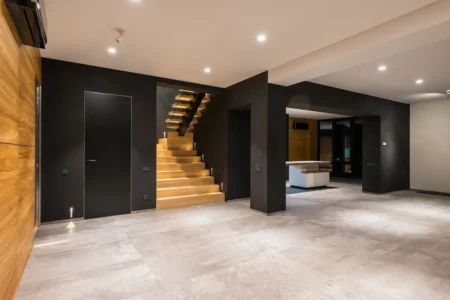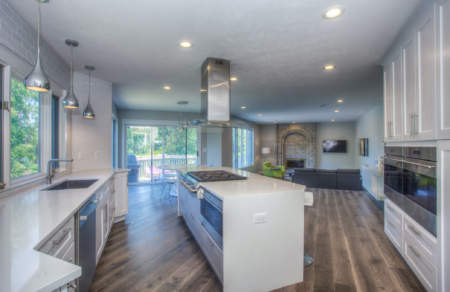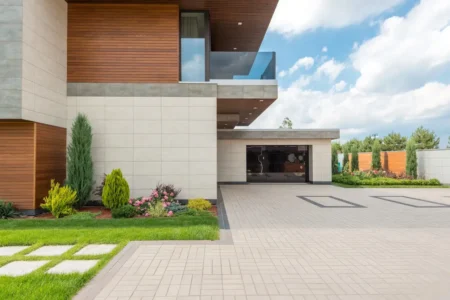Limestone is a natural stone that has been used for centuries as a building material and a flooring option. Limestone flooring offers a timeless elegance and a rustic charm that can suit any style and taste. However, choosing the right limestone flooring and tiles for your home can be a daunting task, as there are many factors to consider, such as color, finish, size, shape, and maintenance. In this post, we will provide you with some help and advice on how to choose the best limestone flooring and tiles for your home, as well as the benefits and drawbacks of this material.
The Benefits of Limestone Flooring for Your Home
Limestone flooring has many advantages that make it a great choice for your home. Here are some of the benefits of limestone flooring:
- Durability: Limestone is a hard and dense stone that can withstand high traffic and wear and tear. It is resistant to scratches, stains, and water damage, making it ideal for areas such as kitchens, bathrooms, hallways, and living rooms. Limestone flooring can last for decades if properly maintained and sealed.
- Versatility: Limestone flooring comes in a variety of colors, styles, and finishes, ranging from near white to honey, gray, and even darker browns. You can also choose from different tile patterns, such as square, herringbone, hexagon, or chevron, to create a unique and customized look for your floor. Limestone flooring can complement any design style, whether you prefer a traditional, contemporary, or rustic theme.
- Beauty: Limestone flooring has a natural and organic beauty that can enhance the aesthetic appeal of your home. Limestone flooring has a rich texture and a subtle veining that adds character and depth to your floor. Limestone flooring can also reflect light and create a warm and cozy atmosphere in your space.
- Value: Limestone flooring can add value to your home, as it is a high-quality and long-lasting material that can increase the attractiveness and functionality of your space. Limestone flooring can also create a luxurious and elegant impression that can impress potential buyers and guests.
Help & Advice for Choosing the Right Limestone Flooring & Tiles
Choosing the right limestone flooring and tiles for your home can be a challenging process, as you need to consider several aspects, such as your budget, your personal preference, your existing decor, and the intended use of the space. Here are some tips and advice to help you make the best decision for your home:
- Consider the color and style of your limestone flooring: Limestone flooring comes in a wide range of colors and styles, so you need to choose the one that matches your taste and your existing decor. For example, if you want a bright and airy feel in your space, you can opt for lighter colors, such as beige, white, or cream. If you want a more dramatic and cozy effect, you can go for darker colors, such as brown, gray, or black. You can also mix and match different colors and styles to create a contrast or a harmony in your space.
- Consider the finish of your limestone flooring: Limestone flooring can have different finishes, such as honed, polished, tumbled, or brushed, that can affect the appearance and the performance of your floor. For example, honed limestone flooring has a flat and matte surface that is smooth and easy to clean. Polished limestone flooring has a shiny and reflective surface that can highlight the natural beauty and the veining of the stone. Tumbled limestone flooring has an aged and weathered look that can create a rustic and vintage feel. Brushed limestone flooring has a wavy and textured surface that can mimic the look of leather or wood.
- Consider the size and shape of your limestone tiles: Limestone tiles can come in different sizes and shapes, such as square, rectangular, hexagonal, or irregular, that can affect the layout and the pattern of your floor. For example, larger tiles can make a small space look bigger and more spacious, while smaller tiles can add more detail and interest to a large space. Square or rectangular tiles can create a classic and simple look, while hexagonal or irregular tiles can create a more modern and dynamic look. You can also experiment with different tile patterns, such as straight, diagonal, herringbone, or chevron, to create a unique and customized look for your floor.
Limestone Flooring Finishes
Another factor that you need to consider when choosing limestone flooring is the finish of the stone. The finish of limestone flooring can affect the look, feel, and performance of your floor. There are four main types of limestone flooring finishes that you can choose from: honed, polished, tumbled, and brushed. Here is a brief overview of each finish and its pros and cons:
- Honed limestone flooring: Honed limestone flooring has a flat and matte surface that is smooth and easy to clean. It is the most common and popular finish for limestone flooring, as it can suit any style and decor. Honed limestone flooring can also hide scratches and stains better than other finishes, as it has a uniform and consistent color. However, honed limestone flooring can also be more prone to etching and dulling, especially if exposed to acidic substances, such as vinegar, lemon juice, or wine. Therefore, honed limestone flooring needs to be sealed regularly and cleaned with a neutral pH cleaner to prevent damage and maintain its appearance.
- Polished limestone flooring: Polished limestone flooring has a shiny and reflective surface that can highlight the natural beauty and the veining of the stone. It can create a luxurious and elegant impression in your space, as well as make it look brighter and more spacious. Polished limestone flooring can also resist water and moisture better than other finishes, as it has a smooth and non-porous surface. However, polished limestone flooring can also be more slippery and dangerous, especially when wet. It can also show scratches and stains more easily, as it has a glossy and contrasting color. Therefore, polished limestone flooring needs to be polished regularly and cleaned with a gentle and non-abrasive cleaner to prevent damage and maintain its shine.
- Tumbled limestone flooring: Tumbled limestone flooring has an aged and weathered look that can create a rustic and vintage feel in your space. It can add character and charm to your floor, as well as hide imperfections and flaws better than other finishes, as it has a rough and uneven surface. Tumbled limestone flooring can also provide more traction and grip, making it safer and more comfortable to walk on. However, tumbled limestone flooring can also be more difficult to clean and maintain, as it has a porous and textured surface that can trap dirt and dust. It can also be more susceptible to staining and fading, as it has a lighter and softer color. Therefore, tumbled limestone flooring needs to be sealed frequently and cleaned with a mild and non-acidic cleaner to prevent damage and maintain its look.
- Brushed limestone flooring: Brushed limestone flooring has a wavy and textured surface that can mimic the look of leather or wood. It can create a warm and cozy atmosphere in your space, as well as add interest and variety to your floor. Brushed limestone flooring can also be more durable and resistant to scratches and stains, as it has a hard and dense surface. However, brushed limestone flooring can also be more expensive and rare, as it requires a special and complex process to achieve its finish. It can also be more sensitive to moisture and humidity, as it has a slightly porous and rough surface. Therefore, brushed limestone flooring needs to be sealed occasionally and cleaned with a soft and neutral cleaner to prevent damage and maintain its finish.
Tips for Maintaining Limestone Tiles
Limestone tiles are a beautiful and durable flooring option for your home, but they also require some care and maintenance to keep them looking new and fresh. Here are some tips and advice on how to maintain your limestone tiles:
- Seal your limestone tiles: Sealing your limestone tiles is one of the most important steps to protect them from damage and deterioration. Sealing your limestone tiles can prevent water, oil, dirt, and other substances from penetrating and staining the stone, as well as enhance its color and shine. You should seal your limestone tiles before and after installation, as well as every year or two, depending on the traffic and use of the area. You can use a penetrating or a topical sealer, depending on the finish and the condition of your limestone tiles. A penetrating sealer can penetrate deep into the stone and provide a natural and matte look, while a topical sealer can coat the surface of the stone and provide a glossy and shiny look. You should always follow the manufacturer’s instructions and recommendations when applying the sealer, as well as test it on a small and inconspicuous area first to check the results and the compatibility.
- Clean your limestone tiles: Cleaning your limestone tiles is another essential step to preserve their appearance and performance. Cleaning your limestone tiles can remove dust, dirt, spills, and stains from the surface of the stone, as well as prevent mold and mildew from growing. You should clean your limestone tiles regularly and gently, using a soft and dry cloth or a vacuum cleaner to remove loose dirt and dust, and a damp and soft cloth or a mop to remove spills and stains. You should also use a mild and neutral pH cleaner that is specially designed for natural stone, and avoid using harsh and acidic cleaners, such as bleach, ammonia, vinegar, or lemon juice, that can damage and etch the stone. You should always rinse and dry your limestone tiles after cleaning, as well as wipe up any spills and stains as soon as possible, to prevent them from setting and becoming permanent.
- Repair your limestone tiles: Repairing your limestone tiles is the final step to restore their beauty and functionality. Repairing your limestone tiles can fix any cracks, chips, scratches, or holes that may occur on the surface of the stone, as well as improve its strength and stability. You can use a filler or a patching compound that matches the color and the texture of your limestone tiles, and apply it to the damaged area with a spatula or a knife. You should also sand and polish the repaired area to smooth and blend it with the rest of the floor. You should always wear gloves and goggles when repairing your limestone tiles, as well as follow the manufacturer’s instructions and recommendations when using the filler or the patching compound.
Conclusion
Limestone flooring is a great option for your home, as it can provide you with durability, versatility, beauty, and value. However, choosing the right limestone flooring and tiles for your home can be a difficult task, as you need to consider many factors, such as color, finish, size, shape, and maintenance. In this post, we have provided you with some help and advice on how to choose the best limestone flooring and tiles for your home, as well as the benefits and drawbacks of this material. We hope that this post has been helpful and informative, and that you can find the perfect limestone flooring and tiles for your home.
FAQs
Is limestone a good floor tile?
Limestone is an excellent choice for floor tiles due to its timeless appeal and durability. It’s versatile enough to fit various design preferences and is particularly well-suited for areas that see a lot of foot traffic.
Is limestone flooring expensive?
The cost of limestone flooring can vary, but it is generally considered a mid-range option in the market. While it may be more expensive than some man-made materials, it is often less costly than high-end natural stones.
Which is cheaper granite or limestone?
Typically, limestone is the more cost-effective option when compared to granite. Granite tends to be on the higher end of the price spectrum due to its density and the complexity of its quarrying process.
Does limestone crack easily?
Limestone is relatively durable and resistant to cracking when properly installed and maintained. However, like all natural stone, it can be susceptible to cracking under extreme pressure or sudden impacts.
Is limestone OK for bathroom floor?
Limestone is a suitable material for bathroom floors as long as it is sealed properly to protect against moisture and staining. Its natural texture can also provide a non-slip surface, which is beneficial in wet areas.
